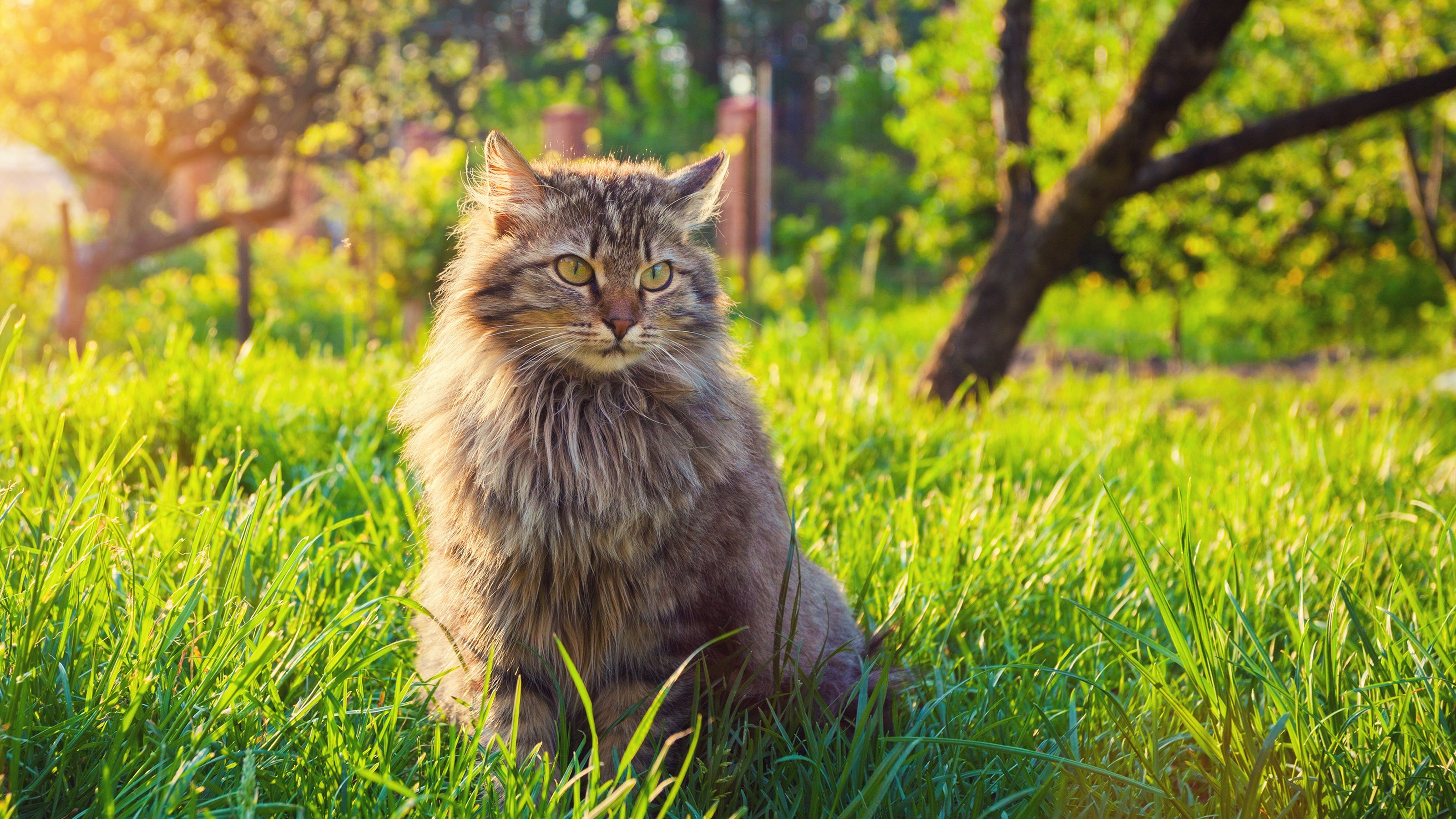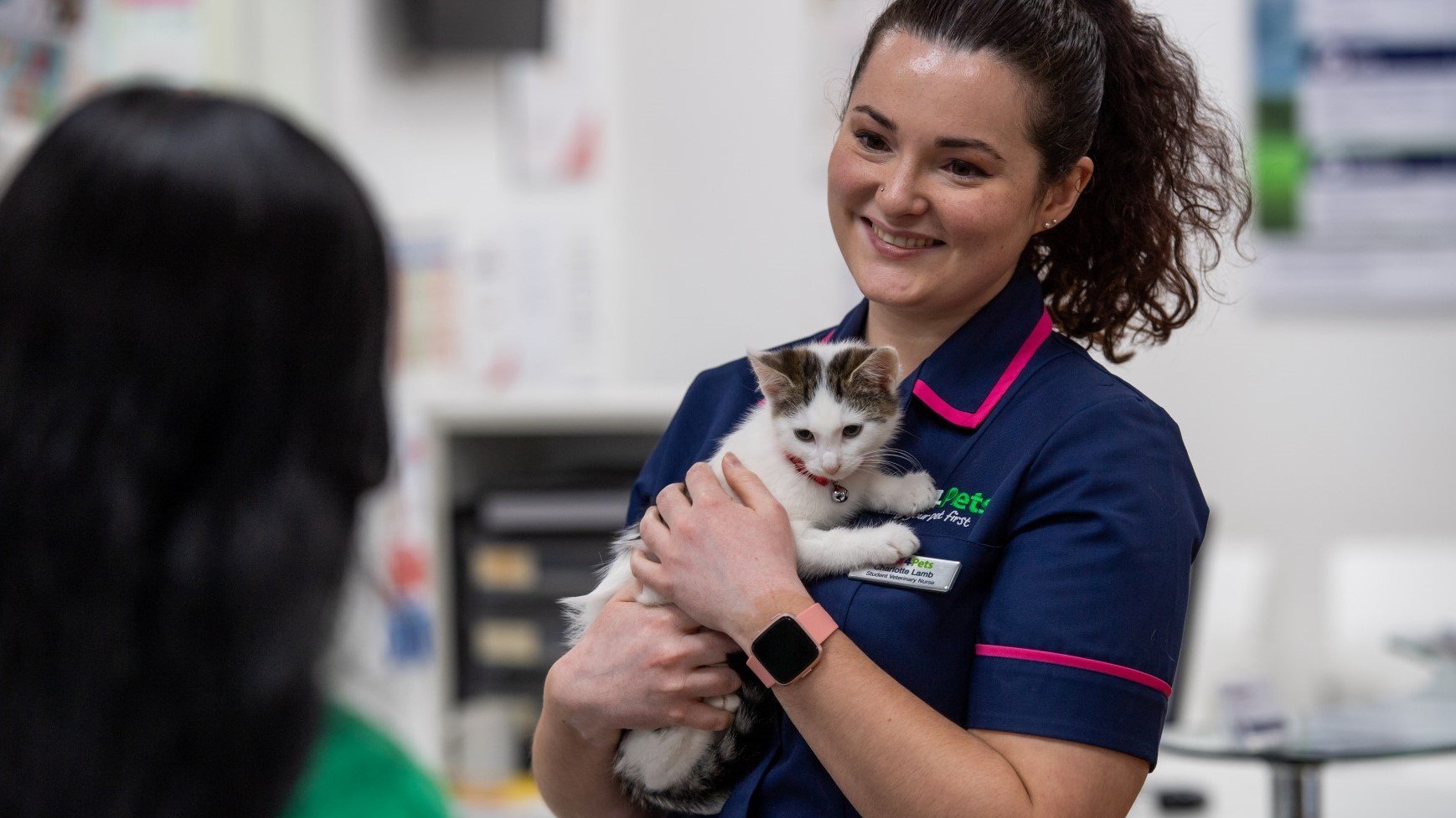
Summer Tips For Cats
As the summer gets into full swing, here are some tips and facts, from how to keep cats cool in summer, and heatstroke to what to do when you're going on holiday.
Originating from the desert, cats are generally very comfortable in the heat and can often be found stretched out sunbathing. When it gets hot in the summer months, cats mainly cool down by sleeping and resting more, in cool shady spots.
Read more summer tips for how to cool cats down
Whilst keeping cats cool might be a priority for owners, being heat lovers, cats are often found basking in the warmest spot in the house, so it is extra important to remember that they can suffer from heatstroke if they find that they can’t cool down. While more commonly seen in dogs, heatstroke can affect cats, especially if they are trapped in a hot area such as a conservatory, car, flat or greenhouse.
Heatstroke occurs when the body temperature rises to dangerous levels and because of the environmental conditions it is impossible for your cat to get rid of excess heat. This can lead to multiple organ failure and even death and sadly, as temperatures can soar in a matter of minutes, development of heatstroke can happen rapidly.
You can help your cat keep cool by making sure they are never confined somewhere that can get overheated, providing iced water for them to drink, using fans or air-conditioning to keep the house cool, and keeping doors and windows open (when safe to do so) for a breeze.
Very old or young cats, and cats which are obese or have flat faces or long hair such as Persians, are more at risk from heatstroke, and extra care should be taken in these cases.
Did you know cats can get sunburn? White or pale coloured cats are most vulnerable to UV radiation from the sun, especially on their noses and ears, as these areas have less protective fur. Just like in people, sunburn can lead to skin cancer in cats.
Sadly, development of cancer often requires surgery for treatment, to remove the affected area.
You can help minimise the risk of sunburn in your cat in two ways:
- Keep them inside on very sunny days – If your skin would burn, so would theirs. Keeping them inside removes the risk of sunburn.
- Apply cat-friendly sunscreen – Just like us, cats can use protective cat-friendly sunscreen to look after their delicate areas. Apply it to the nose and ears especially, but anywhere the fur is thin needs protection. Cats can quickly remove sunscreen by grooming, so it will need to be kept topped up to avoid cat sunburn!
Early detection is the key to managing skin cancers if they develop, so keep a close eye on your cat, and take them to the vet if you spot any skin changes, wherever they are on their body.
In the summer everyone gets warmer, and it is much more likely that doors and windows will be left open, including car doors while packing or washing vehicles, and sheds and garages.
Indoors cats are much more likely to find the opportunity to sneak out in summer – especially as the garden can look a lot more inviting in the summer sun!
Outdoor cats may also have more opportunities to get trapped in cars, sheds, and garages or similar.
Getting your cat microchipped before summer is the best way to permanently identify them, and greatly increases the chances of them being returned to you if they turn up somewhere they shouldn’t be! Collar tags can be a great back up if your cat will wear a collar, but collars should always be safe-release rather than buckle, as buckle collars can cause serious injury if they get caught.
While many cats loathe travel and new places, some are much more suited to a nomadic lifestyle and will be happy to accompany their owner on trips. There are other cases where, due to circumstances, you may be forced to take your cat with you even if you would rather not!
If you are travelling with your cat this summer, here are a few points to consider:
- Get a good, secure cat carrier. Cats need room to stretch out fully in their carrier. A small dog crate may be more appropriate for longer journeys, or if you are travelling with a pair of cats and want to keep them together.
- Send calm vibes. Ever get the feeling your cat knows what you’re thinking? Your cat will pick up on your feelings very easily. Stay calm, to keep them calm.
- Cats die in hot cars. While we all know the slogan for dogs, cats are just as likely to die in a hot car as a dog is. Keep ventilation at an optimum, have the air conditioning on and never leaving your cat in a parked car.
- Sensitive senses. Cats have great hearing and sense of smell. Tunes at top volume could be torture for your cat and a strong air freshener overwhelming.
- Indoors. Even if your cat is usually an outdoor cat, when they are somewhere new keeping them indoors is vital. If they do not know the area, they can easily become lost, or get into fights with local cats.
Cats are very territorial and will, in most cases, prefer to stay at home rather than travel or go into a cattery. If you can find a trusted friend, neighbour or family member, or a professional house sitter, to look after your cat in their normal environment while you are away, this is usually best for your cat.
A popular alternative to at-home care is boarding catteries, where cats are looked after 24/7. This can be stressful for cats who are not used to it, so getting them used to it from a young age if possible is preferable. Some tips for putting your cat in a boarding cattery include:
- Check your cattery in advance.
- Recommendations. Recommendation can be a great way to find a cattery – your vet may be able to help, and International Cat Care also have a list of catteries they have inspected and deemed a high standard.
- Paperwork. You may need to provide evidence that your cat has been vaccinated, as well as details of your vet, and emergency contact details. It is also worth leaving information on your cat’s likes and dislikes.
- Updates. In the age of social media, some catteries will post daily updates on their current residents, so you can check up on your pet while you are away.
- Multi-cat. If you have more than one cat, they may like to be housed together. If they have to be housed separately while you are away, make sure to reintroduce them to each other slowly. They will likely have picked up unfamiliar smells from the cattery, and may be wary of each other at first.
- Belongings. The more familiar your cat is with their surroundings, the happier they will be. Taking their own bedding, toys, food and litter will help keep your cat to feel secure.
While fleas can be a problem year round, their numbers often see a peak in summer. This is due to the warmer weather, and the increased interactions between cats as they spend more time outdoors.
Tick numbers also rise between spring and autumn, and these nasty blood-suckers can carry a range of diseases as well as causing irritations of the skin.
Preventing parasites using treatments available from your vet, and as part of our Complete Care Health Plan, is the best way to protect your cat from parasites this summer.
If you do see fleas or ticks, don’t panic! Your vet will be able to help you treat flea infestations, which will involve treating your pets and also your home.
We are much more likely to keep windows open through summer, and this includes upstairs windows and access to balconies. Sadly, despite their general sure-footedness, even cats can slip and every summer cats are injured falling from open windows or balconies.
Although cats are rumoured to have nine lives, a fall from a height can certainly risk at least one of them. Cats are good at landing on their feet, but impact from a fall can cause internal damage that may not be visible, so if your cat does suffer from a fall, it is always best to get them checked over by a vet, even if they appear fine.
Grass seeds caught in your cat's paws, eyes or ears is an extremely common problem during the summer months.
Grass seeds are like tiny arrowheads which easily get stuck into your pet’s coat and can then penetrate the skin. In some cases, the grass seed can keep travelling to other areas of the body such as the chest which can make them very difficult to find and remove.
Signs depend on where the grass seed got stuck and can include: violent shaking of the head, rubbing at the eyes, chewing at the feet or sudden onset sneezing. Other signs are sudden onset lameness and swelling between the toes.
To help prevent grass seeds getting stuck, you can:
- Trim the fur on your pet's paws and around their ears
- Check your cat for grass seeds routinely especially their ears and between the toes
- Avoid meadows and woodlands where these grasses commonly grow
Grass seeds can be painful and are difficult to remove from sensitive areas, so please contact your local vet if you suspect your pet may have a grass seed stuck.
Health Plans to keep your cat healthy
At Vets4Pets we offer a range of Health Plans that make essential routine treatments more affordable. You'll save money on things like annual vaccinations, flea and worm treatment and routine health check-ups.

Cat Advice
Read more of our expert cat advice to keep your cat happy and healthy.
